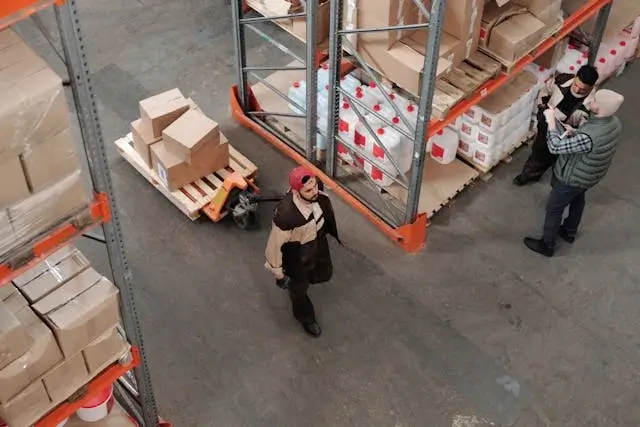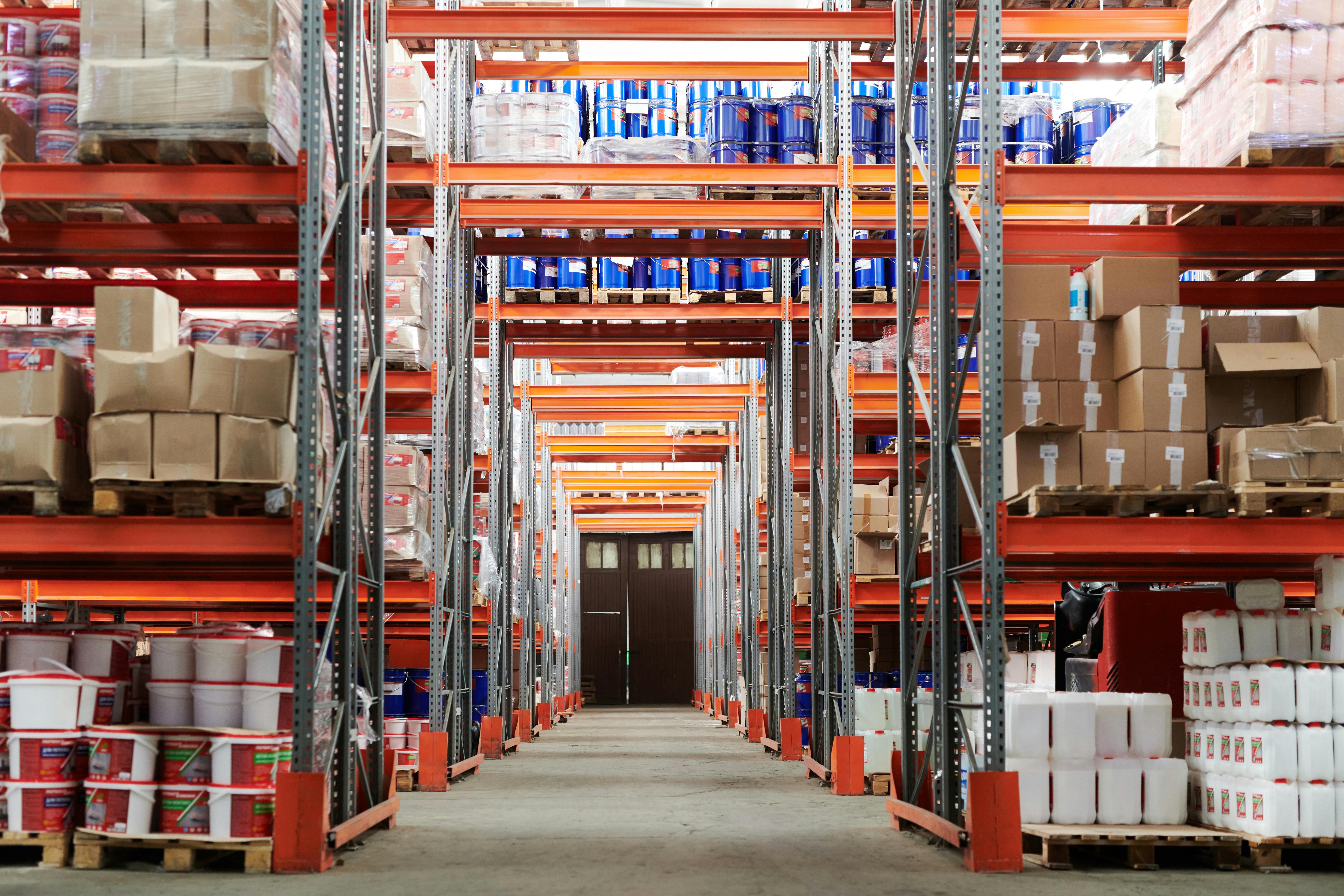

- BLOG
Implementing Zone Picking to Streamline Warehouse Operations (Detailed Guide)
Published: June 27, 2025
Route Optimization API
Optimize routing, task allocation and dispatch
Distance Matrix API
Calculate accurate ETAs, distances and directions
Directions API
Compute routes between two locations
Driver Assignment API
Assign the best driver for every order
Routing & Dispatch App
Plan optimized routes with 50+ Constraints
Product Demos
See NextBillion.ai APIs & SDKs In action
AI Route Optimization
Learns from Your Fleet’s Past Performance
Platform Overview
Learn about how Nextbillion.ai's platform is designed
Road Editor App
Private Routing Preferences For Custom Routing
On-Premise Deployments
Take Full Control of Your Maps and Routing
Trucking
Get regulation-compliant truck routes
Fleet Management
Solve fleet tracking, routing and navigation
Middle Mile Delivery
Optimized supply chain routes
Construction
Routes for Construction Material Delivery
Oil & Gas
Safe & Compliant Routing
Food & Beverage
Plan deliveries of refrigerated goods with regular shipments
Table of Contents

According to a recent report from LogisticsIQ, the global warehouse automation market is projected to exceed 51 billion USD by 2030, growing at over 14 percent CAGR. A large portion of this growth is not driven by robotics alone, but by process redesign and zone picking sits at the heart of that shift.
In high-velocity fulfillment environments, picking is no longer just a manual task. It has become a systemic bottleneck or an optimization lever, depending on how it is structured. The traditional methods of walking the entire warehouse floor for every order are no longer sustainable. As SKU counts rise, order volumes fluctuate, and labor pressures intensify, businesses are forced to rethink how picking is done.
Zone picking is not a trend. It is a response. A response to operational sprawl, fulfillment delay, and picking labor burnout. But implementing it successfully requires more than segmenting the warehouse. It requires coordination, data discipline, and the right technology backbone. This guide is built to walk through all of that in detail.

What follows is a breakdown of how zone picking works conceptually, why it matters, and how it transforms the logic of warehouse movement.
Zone picking is a warehouse picking strategy where the fulfillment area is divided into discrete physical zones. Each zone is assigned to a specific picker or picking team. When an order is received, it is broken into sub-tasks, each routed to the respective zone where the item resides. Pickers work their assigned zones without crossing into others. Once all segments of the order are picked, they are either consolidated in a sorting area or moved through a pass-through sequence depending on the operational setup.
This method contrasts with picker-to-part systems where a single picker may walk the entire floor. Zone picking reduces travel time, limits picker fatigue, and supports more structured labor allocation. It also makes it easier to scale with volume because work is divided more evenly across zones.
What matters most in zone picking is not just how the space is segmented. It is how coordination is maintained across those zones without causing friction, redundancy, or bottlenecks.
There are three core benefits that warehouse operations teams typically seek when implementing zone picking. These are reduction in non-value-added time, improvement in order throughput, and simplification of workforce management.
When pickers are assigned to a dedicated zone, they do not waste time navigating long warehouse aisles to locate a single item. Their movement is limited to one familiar environment, which leads to faster picks, fewer errors, and less training overhead. This is especially beneficial in facilities handling large order volumes with high SKU diversity.
Zone picking also introduces structure into a workflow that is often too reactive. When orders are routed by zone, the operation can handle waves more systematically. Planners can allocate pickers based on zone volume, track productivity by section, and isolate issues without disrupting the entire line.
Finally, zone picking makes the workforce more flexible. Temporary workers can be onboarded into simpler zones. High-performing staff can be rotated through complex or variable zones. The system becomes less dependent on tribal knowledge and more on process.
Following is a closer examination of the actual workflow. This includes the operational steps, handoff models, and the role that systems play in keeping things synchronized.
The process typically begins with a warehouse management system receiving an order and segmenting it into line items. Each line item is mapped to a storage location, and then to a defined picking zone. Orders are broken down into discrete pick lists by zone.
Once the order is fragmented, each picker receives their specific list through a handheld device, printed sheet, or pick-to-light display. They pick only within their assigned zone. After completion, items move to a consolidation point or move down the line for sequential picking if using a pick-and-pass method.
There are two main models of execution. The first is simultaneous zone picking with order consolidation. All pickers work in parallel and the parts of the order are merged at the end. The second is sequential or pick-and-pass, where the order bin travels physically or digitally from one zone to the next, building the order step-by-step.
The choice between these models depends on layout, item velocity, and throughput expectations. Simultaneous models favor speed but require more complex consolidation logic. Sequential models reduce bottlenecks but can suffer if one zone slows down.

Technology is not optional in zone picking. It is the control layer. The warehouse management system must know where each item resides, which zone it belongs to, and when it was last picked. It must balance volume across zones and prevent overload in high-velocity areas.
Handheld scanners, RFID readers, and pick-to-light systems help pickers work efficiently without paper lists. These devices ensure that each zone operates on live data. Updates sync in real time with the central system, which allows the operation to track progress, respond to delays, and reroute orders if one zone falls behind.
Some facilities use conveyors or automated totes to move picked items to a central location. Others use manual carts and batching stations. Regardless of the method, timing and sequence must be preserved. Poor synchronization between zones is the fastest way to lose the benefit of zone picking altogether.
Advanced systems go further. They analyze order heatmaps, reassign zone boundaries dynamically, and use machine learning to predict which zones are likely to bottleneck based on past performance. That level of responsiveness turns zone picking from a static layout choice into an active optimization strategy.
What follows is a breakdown of how zone picking adapts across different types of warehouse environments. Each use case brings its own scale, order velocity, and labor complexity. The principles remain the same, but the way zone picking is implemented shifts depending on the operational need.

E-commerce operations live and die by how fast they can move product from shelf to doorstep. The challenge is not just speed. It is speed at scale with consistency. Fulfillment centers handling thousands of daily orders cannot afford inefficiencies in their picking process. That is where zone picking starts to make sense.
In these facilities, items range from fast-moving consumer goods to slow-moving specialty products. Without structured zones, pickers can waste hours zigzagging through aisles. Zone picking restricts their movement to a defined zone, which reduces fatigue and increases pick density. Orders are split by zone, picked in parallel, and consolidated before packing. This model scales well as volume grows, especially when matched with real-time analytics that adjust labor based on load in each zone.
E-commerce centers also benefit from hybrid models. High-velocity zones are often automated or assisted by robotics, while low-volume zones are staffed manually. The WMS allocates resources accordingly. That balance only works if zone-level data is reliable, which makes technology alignment just as important as the layout itself.

Bulk storage facilities manage high-volume inventory that does not necessarily turn over quickly. These warehouses are often space-constrained and deal with items that are bulky, heavy, or palletized. Traditional picking methods do not scale well because every retrieval requires physical effort, material handling equipment, and high-clearance movement.
Zone picking allows these facilities to divide inventory into zones not just by item category but by material handling type. For example, items requiring forklifts may belong to one zone, while small-pick items live in another. Assigning specialized pickers or equipment to each zone creates a more consistent workflow.
This also helps reduce wear and tear on equipment and lowers the risk of injury. When pickers are familiar with a specific type of movement and inventory category, mistakes drop. Training becomes more focused. Operations become more predictable.
Zone picking is not always about speed in these environments. It is about control, safety, and repeatability.
Retail distribution centers often process both full cases and split-case items. Orders flow from a central warehouse to hundreds of retail outlets, sometimes daily. The complexity lies in the mix of predictable demand and promotional spikes. Without a stable picking process, service levels suffer and downstream stores face stockouts.
Zone picking helps stabilize that variability. By segmenting inventory by product category or store planogram layout, operations teams can align zones with store-level needs. A beverage zone, for instance, might be handled by trained pickers who understand stacking and load balance. A high-turnover snack zone might be automated or assisted with pick-to-light. Each zone is optimized not in isolation but in coordination with the type of store orders it serves.
This approach also supports labor planning. Seasonal increases in demand can be managed by adding temporary pickers to the highest-velocity zones without changing the entire warehouse workflow. That level of adaptability makes zone picking a preferred strategy in high-volume retail environments, especially those with tight delivery schedules.

What follows is a focused look at the technologies that make zone picking possible. Without proper route optimization tools, even a well-zoned warehouse will run into execution issues. The goal is not just segmentation. The goal is orchestration.
A warehouse management system is the backbone of any zone picking setup. It does not just track inventory. It manages logic. The WMS must know which SKUs live in which zones, who is assigned to each zone, and how order fragmentation and reassembly are coordinated across them.
Advanced WMS platforms allow users to create custom zones, define picking rules, and monitor performance metrics by section. They support dynamic zoning, which means zones can shift based on order volume or staffing. This is especially important in facilities that handle seasonal spikes or flash sale fulfillment, where fixed zoning might create bottlenecks.
The WMS must also integrate with labor management systems, material handling equipment, and performance dashboards. Zone-based alerts, priority pick waves, and adaptive routing all depend on how well the WMS is configured. Without this system layer, zone picking becomes nothing more than a map.
Pickers in a zone need real-time visibility. They cannot rely on printed sheets or static instructions when orders are moving fast. That is why barcode scanning systems and pick-to-light technologies have become central to modern zone picking setups.
Scanners tied to the WMS allow pickers to confirm items, reduce errors, and update pick status instantly. These confirmations are critical for downstream zones and for order consolidation. A missed scan can cause a full order delay or incorrect shipment.
Pick-to-light systems go one step further. They guide the picker using visual cues, showing exactly where the item is stored. This not only speeds up the process but reduces training time. In facilities with high labor turnover or temp workers, that guidance is what keeps throughput stable.
Other technologies, such as voice picking or RFID can be layered depending on the warehouse environment and the type of items being handled. But regardless of the tool, the purpose remains the same: to keep each zone operating with clarity, precision, and accountability.
What follows is a clear look at the practical issues teams face when trying to implement or scale zone picking. These are not theoretical challenges. They come up in daily operations, and unless they are addressed early, the efficiency gains promised by zone picking can vanish just as quickly.
It is easy to divide a warehouse into zones. It is far harder to make those zones work together in real time. One of the most common problems in a zone picking environment is that some zones move faster than others. That might sound like a nice problem to have until you realize that orders must still be consolidated. If Zone A finishes early and Zone C is always behind, pickers start waiting. Orders pile up in limbo. Packing slows down. Dispatch starts missing cutoffs.
This happens when zones are sized based on floor space and not item velocity. It also happens when staffing is static and does not shift with the wave load. The solution is not to speed up slow zones blindly. The solution is to use order heatmaps, to rebalance pick distribution, and to treat inter-zone synchronization as a real metric, not just a side effect.
Strong warehouse management systems track pick progress across zones and issue alerts when there is an imbalance. Some operations create buffer zones where early picks can be held temporarily. Others use real-time dashboards to reassign labor during high-volume waves. What matters is not eliminating variance entirely. What matters is being able to respond to it before it breaks the line.
Zone picking might reduce picker travel, but it introduces new kinds of complexity. Now you need to train people on zone-specific layouts. You need to manage shift swaps without breaking the zone balance. And you need to explain to every new hire why they should not just grab any item they see, even if it is part of the order they are picking.
Training becomes more localized. It is no longer enough to teach general picking logic. Each zone may have different shelving, different scanning systems, or different pick priorities. You need micro-training modules. You need mentors in each zone. And you need process signs and real-time guidance tools that do not assume the picker has perfect memory.
Managing labor also becomes more dynamic. Some zones are physically harder than others. Some zones are mentally more demanding. Rotations, incentives, and feedback loops need to be built around that reality. Zone picking does not reduce the importance of people. It increases the need for better alignment between people, tools, and layout.
The following examples highlight how real businesses have used zone picking to resolve long-standing issues and increase throughput without massive capital investment.
A national clothing retailer with hundreds of outlets across the country was struggling to fulfill daily store orders without overtime. The warehouse used a simple picker-to-part system. Pickers walked the full floor with printed sheets. High-return items were often mispicked. Slow zones held back the operation. Accuracy dropped during promotional cycles.
The shift to zone picking did not start with technology. It started with data. The operations team mapped SKU velocity, item locations, and order frequency. They then divided the warehouse into zones by product type and frequency, and assigned dedicated teams. Only then did they deploy handheld scanners and upgrade the WMS.
In three months, the center cut overtime hours by thirty percent. Order accuracy went up. Picker fatigue complaints dropped. The system was not perfect. But it was stable. That stability allowed the business to expand next-day shipping without hiring more staff.
An electronics distributor with a large online channel needed to reduce cycle times between order receipt and outbound shipping. The SKU range was wide. Items ranged from cables to refrigerators. Some were stored in bins, others in pallet racks. A one-size-fits-all picking strategy was not working.
They implemented zone picking by equipment type and handling requirement. Fast-moving accessories were picked in a zone optimized for walking. Heavy items were picked with material handling equipment in a separate zone. Each picker had a distinct method and rhythm.
The result was a forty percent drop in average pick time per order. The system did not speed up the slowest items. It simply allowed the fast zones to operate at full pace without being tied to the slower ones. That alone unlocked the performance they were looking for.

What follows is a look at where zone picking is headed, not just in theory but in how it is likely to change day-to-day operations in the next few years.
As order volumes increase and labor becomes harder to scale, zone picking will shift toward more machine assistance. Autonomous mobile robots will handle inter-zone transfers. AI will analyze pick rates and suggest dynamic zoning plans. Smart glasses will guide new workers without the need for weeks of shadowing.
But this is not about replacing workers. It is about reducing the manual burden of coordination. When systems can predict where a delay is likely, when they can reassign a picker before the wave backs up, or when they can notify packing stations of a zone-level change, the entire workflow gets smoother. AI will not make zone picking simple. It will make it manageable at scale.
The broader trend is toward modular systems. Rather than installing an entire goods-to-person solution across a warehouse, many businesses are opting for automation in just the high-velocity zones. This hybrid approach keeps capital costs down while delivering real ROI.
In this model, automation is not a replacement. It is a performance booster for the zones that need it most. That might mean conveyors for one zone, pick-to-light for another, and pure manual for the rest. The key is that all of it runs under a unified WMS with zone logic baked into the design.
Zone picking is not going away. It is evolving, in fact, it is becoming the framework around which warehouse automation decisions are made.
Zone picking is not just a warehouse layout strategy. It is a full operational philosophy. It forces structure into the picking process. It makes movement more predictable. It aligns labor with inventory. But it only works when every part of the system, from software to staffing supports that logic.
Many teams try to adopt zone picking and get stuck. They design the zones, assign the pickers, and expect results. But without coordination, without feedback, without the right system rules, it turns into a bigger mess than before.
The companies that succeed with zone picking treat it as a living system. They measure it. They adjust it. They invest in the training, the tech, and the transition. And they build enough flexibility into the zones to grow without having to reset every six months.
Warehouse efficiency is no longer a luxury, it is the baseline. Zone picking, when done right, is one of the fastest ways to meet that baseline without losing your team in the process.
Bhavisha Bhatia is a Computer Science graduate with a passion for writing technical blogs that make complex technical concepts engaging and easy to understand. She is intrigued by the technological developments shaping the course of the world and the beautiful nature around us.